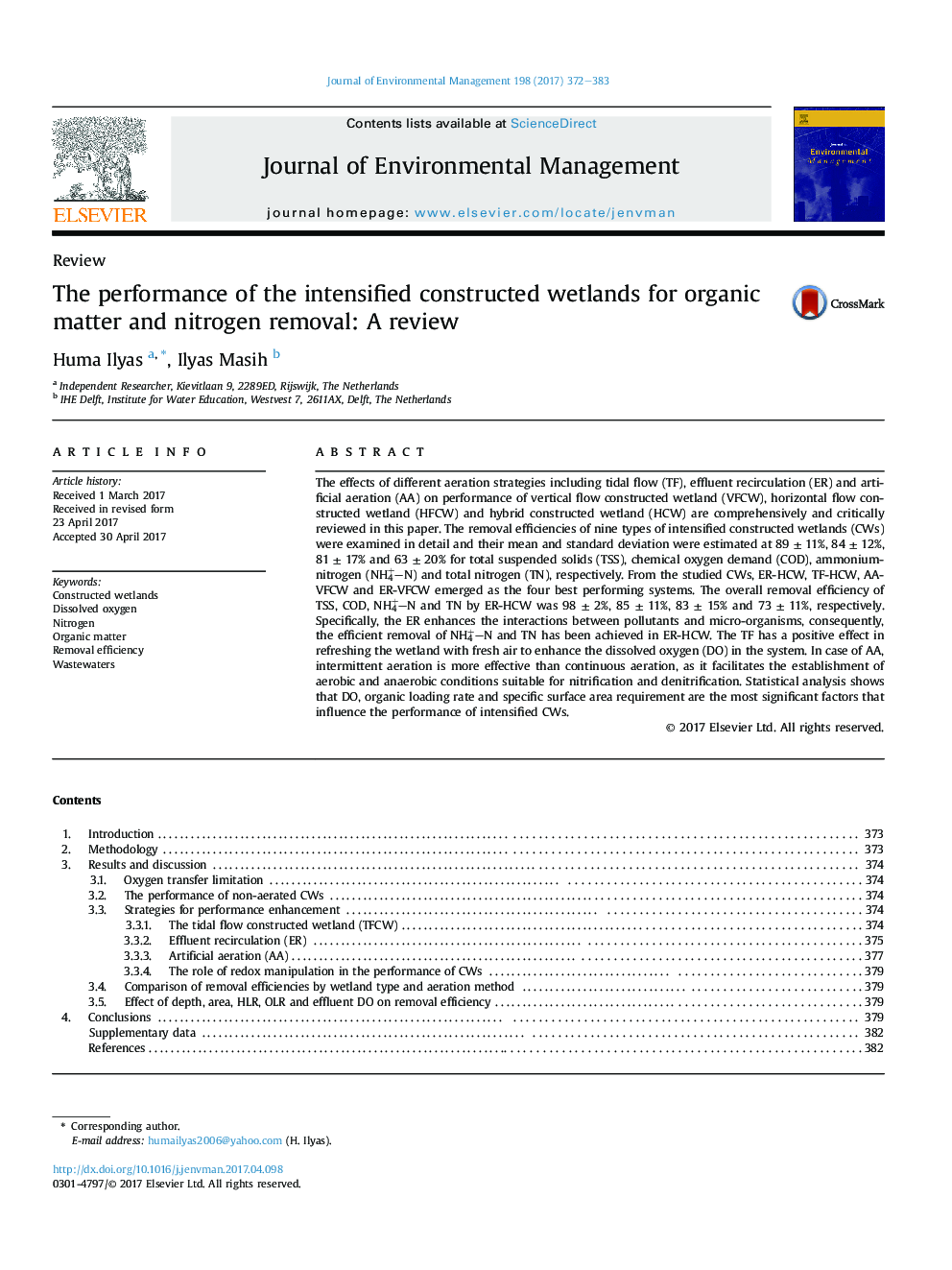| Article ID | Journal | Published Year | Pages | File Type |
|---|---|---|---|---|
| 5116762 | Journal of Environmental Management | 2017 | 12 Pages |
Abstract
The effects of different aeration strategies including tidal flow (TF), effluent recirculation (ER) and artificial aeration (AA) on performance of vertical flow constructed wetland (VFCW), horizontal flow constructed wetland (HFCW) and hybrid constructed wetland (HCW) are comprehensively and critically reviewed in this paper. The removal efficiencies of nine types of intensified constructed wetlands (CWs) were examined in detail and their mean and standard deviation were estimated at 89 ± 11%, 84 ± 12%, 81 ± 17% and 63 ± 20% for total suspended solids (TSS), chemical oxygen demand (COD), ammonium-nitrogen (NH4+N) and total nitrogen (TN), respectively. From the studied CWs, ER-HCW, TF-HCW, AA-VFCW and ER-VFCW emerged as the four best performing systems. The overall removal efficiency of TSS, COD, NH4+N and TN by ER-HCW was 98 ± 2%, 85 ± 11%, 83 ± 15% and 73 ± 11%, respectively. Specifically, the ER enhances the interactions between pollutants and micro-organisms, consequently, the efficient removal of NH4+N and TN has been achieved in ER-HCW. The TF has a positive effect in refreshing the wetland with fresh air to enhance the dissolved oxygen (DO) in the system. In case of AA, intermittent aeration is more effective than continuous aeration, as it facilitates the establishment of aerobic and anaerobic conditions suitable for nitrification and denitrification. Statistical analysis shows that DO, organic loading rate and specific surface area requirement are the most significant factors that influence the performance of intensified CWs.
Related Topics
Physical Sciences and Engineering
Energy
Renewable Energy, Sustainability and the Environment
Authors
Huma Ilyas, Ilyas Masih,
